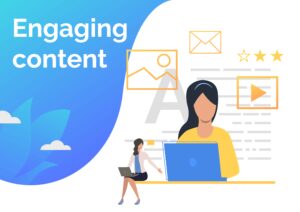Introduction
In the fast-paced world of digital marketing, Facebook retargeting has emerged as a game-changer. It offers marketers a powerful tool to reconnect with potential customers who have previously engaged with their brand. But what exactly is Facebook retargeting, and why is it so crucial in today’s marketing strategies? Let’s dive into this comprehensive guide to understand the ins and outs of Facebook retargeting and how you can leverage it to boost your marketing efforts.
What is Facebook Retargeting?
Definition and Basic Concept
Facebook retargeting is a form of online advertising that targets users who have previously interacted with your website, app, or content. By using data collected through tracking mechanisms like the Facebook Pixel, advertisers can serve personalized ads to these users as they browse Facebook and its associated networks.
How It Works
When a user visits your website, a small piece of code called the Facebook Pixel is triggered, collecting data about their visit. This information allows Facebook to identify these users and show them specific ads related to their previous interactions with your site. This way, you can keep your brand in front of potential customers, encouraging them to return and complete desired actions such as making a purchase or signing up for a newsletter.
Benefits of Facebook Retargeting
Increased Conversion Rates
Retargeting ads are shown to users who have already shown interest in your product or service, making them more likely to convert compared to first-time visitors. By staying top-of-mind, you can guide these users down the sales funnel and increase your overall conversion rates.
Enhanced Brand Recall
Consistent exposure to your brand through retargeting ads helps reinforce brand recognition and recall. This familiarity can be crucial when potential customers are ready to make a purchase decision, as they are more likely to choose a brand they recognize and trust.
Cost-Effectiveness
Facebook retargeting can be a cost-effective marketing strategy because it targets a specific audience that has already demonstrated interest in your brand. This targeted approach often leads to a higher return on investment (ROI) as the ads are more relevant and engaging to the audience.
Understanding Facebook Pixel
What is Facebook Pixel?
The Facebook Pixel is a piece of code that you place on your website to collect data that helps you track conversions, optimize ads, build targeted audiences for future ads, and remarket to people who have taken some kind of action on your website.
Setting Up Facebook Pixel
Setting up the Facebook Pixel is straightforward:
- Go to the Facebook Events Manager and select Pixels.
- Click on ‘Add New Data Source’ and choose Facebook Pixel.
- Name your Pixel and enter your website URL.
- Follow the on-screen instructions to install the Pixel on your website, either manually or using a partner integration like Google Tag Manager.
Benefits of Using Facebook Pixel
- Track Conversions: Understand how users are interacting with your site after seeing your Facebook ads.
- Optimize Ads: Use the data to optimize your ad delivery to target the most relevant audience.
- Build Targeted Audiences: Create Custom Audiences based on specific actions taken on your website.
Types of Facebook Retargeting
Website Retargeting
This involves showing ads to users who have visited your website. You can segment these users based on specific actions they took, such as visiting a particular page or abandoning a shopping cart.
Engagement Retargeting
Engagement retargeting targets users who have interacted with your content on Facebook or Instagram, such as liking a post, commenting, or sharing.
Customer List Retargeting
Upload your customer lists to Facebook to create Custom Audiences. This allows you to target your existing customers with specific ads, encouraging repeat purchases or upselling.
Dynamic Product Ads
Dynamic Product Ads automatically show the right products to people who have expressed interest on your website, in your app, or elsewhere on the Internet. This is especially useful for e-commerce businesses looking to retarget users with the exact products they viewed or added to their cart.
Creating a Facebook Retargeting Campaign
Step-by-Step Guide
- Set Up Facebook Pixel: Ensure the Pixel is properly installed on your website.
- Create Custom Audiences: Define your audience based on website visits, app activity, or customer lists.
- Design Your Ads: Craft compelling ad copy and choose the right formats.
- Set Your Budget and Schedule: Determine how much you want to spend and set the duration of your campaign.
- Launch and Monitor: Launch your campaign and monitor its performance to make necessary adjustments.
Setting Goals and Objectives
Clearly define what you want to achieve with your retargeting campaign. Are you aiming to increase sales, generate leads, or boost engagement? Having clear goals will help you measure the success of your campaign and optimize it accordingly.
Selecting the Audience
Choose the right audience segments for your campaign. Use data from the Facebook Pixel to create Custom Audiences and Lookalike Audiences that are most likely to convert.
Audience Segmentation for Retargeting
Segmenting Based on Behavior
Divide your audience based on their behavior on your website. For example, segment users who visited a product page but didn’t make a purchase differently from those who added items to their cart but didn’t check out.
Using Custom Audiences
Custom Audiences allow you to target users based on specific actions they’ve taken, such as visiting your website, engaging with your content, or being part of your customer list.
Lookalike Audiences
Lookalike Audiences are created based on the characteristics of your existing customers or Custom Audiences. Facebook identifies users with similar traits and interests, expanding your reach to potential new customers.
Designing Effective Retargeting Ads
Crafting Compelling Ad Copy
Your ad copy should be clear, concise, and compelling. Highlight the benefits of your product or service and include a strong call-to-action (CTA) to encourage users to take the desired action.
Choosing the Right Ad Formats
Facebook offers various ad formats, including carousel ads, single image ads, and video ads. Choose the format that best showcases your product and resonates with your audience.
Visual Elements and Creatives
Use high-quality images and videos that capture attention and convey your message effectively. Visual elements should be aligned with your brand and designed to engage your audience.
Budgeting and Bidding Strategies
Setting a Budget
Determine how much you are willing to spend on your retargeting campaign. Allocate your budget based on the potential ROI and the value of conversions.
Bidding Strategies
Choose a bidding strategy that aligns with your campaign goals. Options include cost-per-click (CPC), cost-per-thousand-impressions (CPM), and cost-per-action (CPA).
Optimizing for ROI
Continuously monitor your campaign’s performance and make data-driven adjustments to maximize your return on investment. This might involve tweaking your audience segments, ad creatives, or bidding strategy.
Measuring Success
Key Metrics to Track
To gauge the effectiveness of your retargeting campaign, focus on key metrics such as click-through rate (CTR), conversion rate, cost per conversion, and return on ad spend (ROAS).
Analyzing Performance Data
Regularly review your campaign data to identify trends and areas for improvement. Use tools like Facebook Ads Manager and Google Analytics to track performance and make informed decisions.
Making Data-Driven Decisions
Use the insights gained from your performance data to refine your retargeting strategy. This might involve testing new ad creatives, adjusting your audience segments, or experimenting with different bidding strategies.
Common Mistakes to Avoid
Overwhelming Your Audience
Avoid bombarding your audience with too many ads, which can lead to ad fatigue and annoyance. Set frequency caps to ensure your ads are seen at optimal intervals.
Ignoring Ad Fatigue
Regularly refresh your ad creatives to prevent ad fatigue. Rotating new images, videos, and copy can keep your audience engaged and interested.
Poor Audience Segmentation
Ensure your audience segments are well-defined and relevant. Poor segmentation can lead to irrelevant ads being shown to users, reducing the effectiveness of your campaign.
Case Studies of Successful Facebook Retargeting
Case Study 1: E-commerce Brand
An e-commerce brand increased its sales by 30% through dynamic product ads. By retargeting users who viewed specific products but didn’t purchase, they were able to show personalized ads featuring those exact products, resulting in higher conversion rates.
Case Study 2: SaaS Company
A SaaS company improved its lead generation by 25% using website retargeting. By targeting users who visited their pricing page but didn’t sign up, they delivered ads with compelling offers, nudging prospects to take the next step.
Case Study 3: Local Business
A local business saw a 40% increase in foot traffic by using engagement retargeting. By targeting users who interacted with their Facebook posts, they drove more in-store visits with special promotions and event announcements.
Advanced Facebook Retargeting Techniques
Sequential Retargeting
Sequential retargeting involves showing a series of ads to guide users through the customer journey. Start with awareness ads, followed by consideration ads, and finally, conversion-focused ads.
Cross-Sell and Upsell Strategies
Use retargeting to promote complementary products (cross-sell) or more expensive versions of products users have shown interest in (upsell). This can increase the average order value and overall sales.
Retargeting Across Devices
Ensure your retargeting campaigns are optimized for multiple devices. Users often switch between devices, so your ads should be consistent and relevant whether they are seen on a desktop, tablet, or smartphone.
Future Trends in Facebook Retargeting
AI and Machine Learning
Artificial intelligence and machine learning are transforming retargeting by enabling more precise audience targeting and personalization. These technologies can analyze vast amounts of data to predict user behavior and optimize ad delivery.
Personalization and Dynamic Content
Personalized and dynamic content is becoming increasingly important. Using data to deliver highly relevant ads based on user behavior and preferences can significantly improve engagement and conversion rates.
Integration with Other Platforms
Integrating Facebook retargeting with other marketing platforms (like email marketing and CRM systems) can create a cohesive and powerful marketing strategy. This multi-channel approach ensures a consistent brand message and enhances user experience.
Conclusion
Facebook retargeting is a powerful tool that can significantly enhance your digital marketing efforts. By understanding its fundamentals, setting up effective campaigns, and continuously optimizing based on data, you can increase conversions, improve brand recall, and achieve a higher ROI. As technology evolves, staying updated with the latest trends and techniques will ensure your retargeting strategies remain effective and competitive.
FAQs
What is the best frequency for retargeting ads?
The ideal frequency for retargeting ads varies depending on your audience and campaign goals. Generally, showing ads 2-3 times per week can be effective without overwhelming your audience.
How do I handle ad fatigue in my retargeting campaigns?
To handle ad fatigue, regularly update your ad creatives and rotate different versions. Use frequency caps to limit the number of times an ad is shown to the same user.
Can I retarget users who haven’t visited my website?
Yes, you can retarget users based on their engagement with your Facebook or Instagram content, as well as upload customer lists to create Custom Audiences for retargeting.
What is the difference between custom audiences and lookalike audiences?
Custom Audiences are created based on specific actions users have taken, such as visiting your website or engaging with your content. Lookalike Audiences are broader groups of users with similar characteristics to your Custom Audiences, helping you reach new potential customers.
How can I measure the effectiveness of my retargeting campaign?
Measure the effectiveness of your retargeting campaign by tracking key metrics such as click-through rate (CTR), conversion rate, cost per conversion, and return on ad spend (ROAS). Use tools like Facebook Ads Manager and Google Analytics to analyze performance data and make data-driven decisions.




